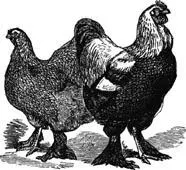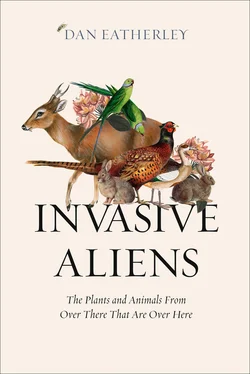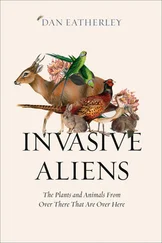
‘This England never did, nor never shall,
Lie at the proud foot of a conqueror.’
The Life and Death of King John, William Shakespeare, 1623
They didn’t come for the weather, that was for sure. As Aulus Plautius knew only too well, gales, incessant rain and a fleet-destroying storm had scuppered Julius Caesar’s attempts to conquer the island in 55 and 54 BCE. But now, with orders from the new and already beleaguered emperor Claudius ringing in his ears, the general had no choice but to try again. So, when the first Roman caliga squelched into British mud somewhere along the southeast coast in 43 CE, there was a new determination to get the job done and, with 40,000 legionaries, auxiliaries and cavalry troops at his disposal, Plautius could hardly fail. Yes, some opposition would need to be dealt with. Caractacus, chieftain of the Catuvellauni people, was routed at the battle of Medway and his stronghold at Camulodunum – present-day Colchester – seized, but he fled to the west to fight a prolonged insurgency before his eventual capture. A few years later Boudica, the Iceni queen, also had a pop at the invaders, razing Camulodunum, along with Londinium (London) and Verulamium (St Albans). But she, too, succumbed. Rome would never conquer the entire island; however, within a century much had been brought to heel, with the Scots and other recalcitrants left to their own devices.
What Britannia lacked in climate and hospitable welcome was more than offset in mineral wealth: iron in Kent, silver in the Mendips and a generous seam of limestone from Oxfordshire to Lincolnshire, perfect for building roads and towns, aqueducts and bath-houses. Productive agricultural land was widespread too, although scant forest remained. Nevertheless, like all colonists, the Romans felt their new possession wasn’t quite up to scratch.
The food in particular left much to be desired. Little in the way of fruit and veg was grown in Late Iron Age Britain. Notwithstanding the odd amphora of wine, olives, shellfish and other rarefied menu items that some pre-Roman elites are known to have imported, the locals had to content themselves with a diet heavy in oats and barley. A modest range of vegetables was cultivated, but dairy products were seasonal treats and meat a luxury. Most of today’s familiar herbs and spices were absent. For the Romans, this just wouldn’t do. Oats and barley were all very well for the subjugated – or as livestock fodder – but their own tastes were more refined.
The occupying power set about expanding the cuisine, introducing at least 50 new species of plant foods, most originating in the Mediterranean Basin. These included fruits such as peach, pear, fig, mulberry, sour cherry, plum, damson, date and pomegranate, along with almond, pine nut, sweet chestnut and walnut. Romans brought vegetables too, from cultivated leek and lettuce, to cucumber, rape and possibly turnip, along with new varieties of cabbage, carrot, parsnip and asparagus which already grew wild in Britain. Black pepper, coriander, dill, parsley, anise and black cumin added to a bonanza of outlandish flavours. Oil-rich seeds of sesame, hemp and black mustard were also among the arrivals.
Many introductions had supposed medicinal functions too. For the Roman historian, Cato the Elder, the cabbage surpassed all vegetables in that respect. Writing in about 160 BCE, he noted that it ‘promotes digestion marvellously and is an excellent laxative’. Moreover, he insisted, there was nothing better than a warm splash of urine collected from a habitual cabbage-eater to treat headaches, poor eyesight, diseased private parts and sickly newborns. Another plant introduced to Britain for its therapeutic properties was Alexanders – the ‘parsley of Alexandria’ – a chunky lime-green relative of celery, which grew to 150 centimetres in height and was prized as aromatic vegetable and versatile tonic alike. The Romans may have been on to something here: recent chemical analysis of Alexanders reveals high concentrations of the anticancer compound isofuranodiene.
How many of these species were grown in Britain during the occupation rather than imported as ready-to-eat crops is unclear. The sweet chestnut, for instance, a staple of many a legionary’s mess-tin, is absent from the medieval pollen record, suggesting it was grown here only much later. A period of hotter summers across northern Europe, including Britain, during the early years of Roman occupation may have favoured the growth of warmth-loving figs, mulberries, grapes, olives, pine nuts and lentils, albeit on a modest scale, perhaps in garden pots. By the time the Romans left, several introductions, including walnut, carrot and cherry, are known to have fully established themselves.
The origins of certain plants can be traced to Britain’s first formal gardens, laid out during the Roman period. The best-known example is Fishbourne Palace in West Sussex, built in about 75 CE, whose outdoor space boasted tree-shaded colonnades and ornamental water features, along with geometric beds, fertilised with manure and bordered by a decorative hedging box. Fishbourne is now believed to have been the residence of a loyal Brit: Tiberius Claudius Cogidubnus, chieftain of the Regni tribe; if true, it was a handsome reward indeed for his allegiance to the occupying power.
A minority of Roman plant introductions are today regarded as invasive. One of them is probably ground-elder. This iron-rich perennial was cultivated both as culinary herb and for treating arthritis (another name for it is ‘gout weed’), but once its spaghetti-like rhizomes got a foothold, ground-elder was near unstoppable. (Rhizomes are specialised subterranean stem sections capable of putting out both roots and new shoots.) To this day, up to £1 million is spent every year eradicating it from gardens. Some experts say ground-elder is native, but because the weed is usually found close to human habitation its presence here is generally blamed on the Romans.
As we’ve seen, sheep, cattle, pigs and goats were established in Britain prior to 43 CE, but the chicken – today the world’s commonest and most widespread livestock species – was still a rarity in this country, judging from its absence in the archaeological record. This may have been an artefact of the poor preservation of their brittle bones and difficulties in identification. The earliest remains appear in Early Iron Age burial sites (around 800 BCE), in Hertfordshire and Hampshire, and their very scarcity may have perhaps been reason enough to entomb these exotic birds from the Orient with the lately departed. But when, where and why were people first drawn to the red junglefowl, the chicken’s probable wild predecessor? No one knows for sure, but domestication seems to have occurred somewhere in south or southeast Asia around 4,000 years ago, with tame fowl brought to the Mediterranean by the eighth century BCE, reaching central Europe a hundred years later.
Chickens and their eggs have always been eaten, but for much of human history they’ve been as prized for their pugilistic prowess as for their gastronomic qualities. Cockerels, it turned out, need scant encouragement to set at each other with beak, claw and, in the older birds, wickedly sharp leg spurs. The skirmishes have excited the bloodlust of onlookers for generations. Cockfighting spread west across India and the Middle East, the sport in turn captivating the Persians, Greeks and the Romans. Chickens held a religious significance too, the males symbolising the sun god in the Roman cult of Mithras. Caged fowl would be taken on military campaigns and their eating habitats studied for purposes of divination; if your sacred chicken, when offered food, guzzled it down, all augured well for the impending battle. Fowl-keeping in Britain grew in popularity up to and throughout the Roman invasion, albeit the preserve of a privileged few. Here, as elsewhere, chickens were multifunctional, a source of food, entertainment and devotion. Their bones are associated with Roman temples, such as one at Uley in Gloucestershire dedicated to Mercury, and they regularly turn up in Romano-British graves.
Читать дальше












